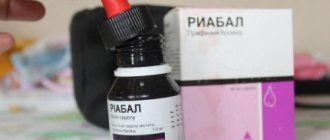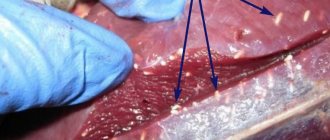Cystitis is one of the most common bladder diseases in everyday life. With this disease, the lining of the bladder becomes inflamed. A person suffering from cystitis experiences a frequent (and often false) urge to urinate, pain and discomfort when urinating, and a feeling of an incompletely emptied bladder.
Despite the unpleasant symptoms, cystitis is treated with indifference, equating it almost to a runny nose. But if you lose time, then cystitis, which can be easily gotten rid of at the initial stage, can develop into a chronic form and lead to the development of interstitial cystitis , which cannot be treated therapeutically. Sometimes cystitis can lead to pyelonephritis and other complications. Therefore, at the first symptoms, consult a urologist!
Cystitis in women
1 Diagnosis of cystitis in women
2 Diagnosis of cystitis in women
3 Diagnosis of cystitis in women
Cystitis in women is much more common than cystitis in men. We can say that this disease is more “female”. Among female urological diseases, cystitis is the undisputed leader. Almost every second woman has experienced all the “delights” of cystitis at least once in her life. Thanks to the short and wide urethra, infections from the female genital organs quickly reach the bladder. Cystitis in women quickly passes from acute to chronic form.
Women also often develop cystitis during pregnancy (when the growing uterus begins to put its weight on the bladder).
With cystitis, a woman’s quality of life deteriorates. She has to dress warmer so as not to “catch a cold”, refrain from intimacy with her loved one, and reduce her time in public places, at holidays and events due to inflammation of the bladder. The woman does not get enough sleep (since the urge to urinate continues both day and night), begins to feel worse, experiences psychological discomfort and looks tired.
Why it is not recommended to treat cystitis at home
The onset of cystitis occurs quickly, so most often patients begin treatment on their own and perhaps even improve.
It is important to remember that the disease does not stop once the symptoms disappear.
If the disease is not treated, it can become chronic. The inflammatory process can take an upward path and even cause pyelonephritis.
Cystitis in men
1 Diagnosis of cystitis in men
2 Diagnosis of cystitis in men
3 Diagnosis of cystitis in men
Cystitis in men is a rather rare phenomenon; the disease can appear as a result of an inflammatory infection, due to which the urethra, ovaries and prostate gland begin to suffer.
To make a correct diagnosis, sometimes men only need to undergo a rectal examination, which will help determine whether there is an enlarged prostate. If the inflammation continues long enough, you will need to do an ultrasound and intravenous urography.
How to relieve pain yourself
First aid for cystitis is to take medications that help relieve inflammation and pain.
Cystitis is a disease characterized by frequent relapses. Under no circumstances should you start taking antibiotics without a doctor’s prescription and an analysis of the sensitivity of pathogenic microflora to certain types of drugs. It is this approach that will help avoid the emergence of bacterial resistance and the occurrence of repeated inflammation in case of improper treatment.
For complex treatment of cystitis, antibacterial therapy is supplemented with herbal remedies. The composition of the paste for preparing a suspension for oral administration of Phytolysin includes a condensed extract of a mixture of 9 types of plant materials, as well as 4 essential oils and other components. The finished suspension has a diuretic effect, relieves pain, relieves inflammation, reduces the crystallization of mineral components of urine and flushes sand and small stones from the urinary tract.
An additional measure to prevent cystitis can be avoiding tight synthetic underwear, drinking enough liquid, urinating regularly, and following personal hygiene rules.
Cystitis in children
Cystitis in children is an infection well known to pediatricians, accompanied by painful and frequent urination, with a possible increase in body temperature and fever. Cystitis occurs in children of any age and both sexes, but in girls due to anatomical features it is more common. Cystitis caused by chlamydia occurs in children (a child becomes infected due to the presence of chlamydia in his parents or when the child violates hygiene standards and frequently visits swimming pools and saunas). Also, cystitis in children can appear with weakened immunity.
The pain and burning sensation that a child experiences when urinating can trigger acute urinary retention.
Features of etiotropic therapy of chronic cystitis
In accordance with the principles of evidence-based medicine, for the treatment of urinary infections, it is advisable to use drugs with an expected 95% effectiveness against pathogens typical for a given region (clinic, hospital). According to the current official recommendations, such drugs are fluorinated quinolones. For uncomplicated urinary tract infections, ciprofloxacin is considered the drug of choice. At the same time, a number of studies in recent years have shown a significant increase in resistance to ciprofloxacin, which can reach 20% among patients in urological hospitals. The disadvantage of ciprofloxacin is its low activity against gram-positive pathogens. A significant problem with its use is the large number of generic ciprofloxacin preparations on the pharmaceutical market with questionable activity, which largely leads to discredit of the active substance and distrust of this drug on the part of clinicians. Considering the above circumstances, today a number of urological clinics prefer to use third-generation fluoroquinolones (levofloxacin, sparfloxacin) or fourth generation (moxifloxacin). These drugs are characterized by high penetrating ability and the creation of large therapeutic concentrations in tissues and intracells. The presence of a long half-life of fluoroquinolones of the III and IV generations from 12 to 18 hours allows the use of these drugs once a day. Based on the principle of maximum sufficiency, antibacterial therapy should be carried out in the maximum daily dose, which is also advisable from the point of view of overcoming pathogen resistance mechanisms.
The presence of a parenteral form in the first-line drug is a significant advantage when used in a hospital. Drugs administered parenterally are characterized by high bioavailability, greater adherence to treatment in patients with diseases of the gastrointestinal tract, and easier control of treatment in patients with reduced intelligence and elderly patients, who often make up the majority of the department's population. The widespread use of fluoroquinolones in outpatient practice has led to a significant increase in the resistance of urinary infection pathogens to them, which today occurs in approximately 8% of patients in Russia. In a hospital setting, good results can be achieved in such patients using third generation aminoglycosides (amikacin). From the point of view of reducing nephro- and ototoxic reactions, administration of amikacin 1 g-1 time per day intramuscularly is indicated. In patients with suspected nosocomial infection with the appropriate severity of clinical manifestations, in patients with a high risk of developing complications, it is advisable to use combination therapy with third and fourth generation cephalosporins (cefotaxime, ceftraxon, cefepime 1g-2 r/day i/v) in combination with aminoglycosides .
In a hospital setting, along with clinical data, a simple and convenient method for monitoring the effectiveness of empirical therapy is to quantify the degree of bacteriuria using Gram microscopy of urine sediment. In any case, empirical therapy is carried out until detailed results of bacteriological examination and PCR diagnosis of urogenital infections are obtained.
In patients with mixed infection caused by opportunistic bacteria and sexually transmitted pathogens, the drugs of choice are fluoroquinolones of the third and fourth generation. If there are contraindications to the administration of fluoroquinolones in such patients, sequential administration of drugs from different groups, or less often a combination of antibiotics, taking into account their compatibility, is used. When gonococcus is detected in a patient with cystitis, the drug of choice is ceftriaxone. Patients with verified trichomonas infection require urgent prescription of metronidazole. Treatment of urogenital infection caused by Chlam. trachomatis, Urea.urelyticum, Myc.hominis are usually carried out after eradication of opportunistic pathogens. To eradicate atypical microorganisms, tetracycline drugs and macrolides are used as the second line of therapy. After final identification of the pathogen and obtaining an antibiotic resistogram, treatment adjustment for targeted therapy is usually not difficult. The exception is patients with infection caused by multidrug-resistant hospital strains. For such patients, it is possible to prescribe reserve antibiotics from the carbopenem group (meropenem 0.5-2 r/day i.v.).
The usual duration of antibiotic use in a hospital setting is 10–14 days. Objective criteria for the effectiveness of treatment include obtaining a negative urine culture result and normalization of leukocyte levels in urine tests. It should be noted that targeted antibacterial therapy will have a lasting clinical effect only if the causes of cystitis are eliminated. Their search and correction is the main task of treating patients in a urology department.
Reasons for the development of cystitis
As a rule, cystitis is provoked by infection (most often E. coli, staphylococci, streptococci, etc.). Microorganisms begin to multiply in the mucous membrane and destroy it.
Cystitis can also be caused by sexually transmitted diseases (ureaplasmosis, mycoplasmosis, etc.).
Cystitis can also occur as a consequence of other urological diseases, such as inflammation of the kidneys, inflammation of the ureters and disorders of the prostate gland.
Other factors that contribute to the development of cystitis may include:
- general hypothermia of the body, especially the legs;
- poor personal hygiene;
- hormonal changes and hormonal imbalance (in women - pregnancy, menopause);
- stones in the bladder (urolithiasis);
- narrowing of the urethra;
- trauma to the urethra;
- pelvic organ prolapse;
- diabetes;
- weak immunity;
- prostate disease, leading to incomplete emptying of the bladder;
- irritating scented soaps, shampoos and bubble baths;
- stress.
It's time to start an investigation
But sometimes even treatment according to all the rules does not help. Therefore, if cystitis has not gone away within 7 days, it is necessary to undergo further examination, and, perhaps, begin to actively look for concomitant diseases. Among them may be, for example, other diseases of the genitourinary system (such as colpitis, bacterial vaginosis, pyelonephritis, urolithiasis, prostatitis in men), as well as genital infections (trichomoniasis, chlamydia). Patients with diabetes mellitus are also predisposed to cystitis (“sweet” urine promotes the growth of bacteria).
To identify the circle of “suspects,” the doctor must collect an anamnesis. And for this, you need to find out whether cystitis occurred for the first time or not, whether there was hypothermia before the exacerbation, whether all this was preceded by unprotected sex, whether the patient underwent aggressive treatment (chemotherapy, radiation therapy), whether he took medications and what kind, etc.
Depending on this, the doctor can refer the patient to a gynecologist and urologist, and also prescribe a list of necessary studies. As a rule, for chronic cystitis, the following are necessary: ultrasound of the pelvic organs and invasive cystoscopy (a tube with light is inserted into the urethra, and the condition of the mucous membrane is assessed).
Among the tests, you may need a urine sample according to Nechiporenko (helps to exclude or confirm the diagnosis of “pyelonephritis”) and the so-called two-glass urine sample (needed to make a differential diagnosis between cystitis and urethritis).
Types and forms of cystitis
Like other diseases, cystitis can be acute or chronic .
Acute cystitis
Acute cystitis manifests itself differently in all people; it can last from 2 to 10 days and occur with alternating periods of exacerbation and remission.
The acute form of cystitis is characterized by fever, chills, general weakness, difficult and painful urination. Urine comes out in small portions, sometimes requiring effort to pass it out. During urination, the patient feels a burning sensation in the urethra, and after it - a pain in the lower abdomen. In acute cystitis, a picture of general poisoning of the body may be observed (body temperature 38-40 degrees, weakness, sweating, dry mouth, thirst). This may indicate that the infection has spread to the tissues of the kidneys and renal pelvis, leading to the development of pyelonephritis. In this case, emergency medical care is required.
Chronic cystitis
Chronic cystitis is characterized by waves of exacerbation and decline of the disease. There is a frequent urge to urinate and pain when passing urine. In chronic cystitis, the symptoms are constant, only their intensity changes during treatment. Microorganisms in the urine in this form of the disease are not detected during laboratory examination. Tuberculous cystitis poses a particular danger.
Forms of cystitis in chronic form:
- latent cystitis (has hidden, implicit symptoms, characterized by the absence of obvious exacerbations);
- persistent cystitis (exacerbations occur more than 3 times a year);
- interstitial cystitis (constant, sometimes unexplained pain in the bladder, frequent exacerbations, deformation of the bladder walls).
There are also other forms of the disease - for example, postcoital cystitis ( cystitis after sex ), as well as “honeymoon cystitis” (occurs in women after defloration). The mechanism of postcoital cystitis lies in the anatomical feature of the female urethra. During sexual intercourse, vaginal mucus is thrown into the urethra, which causes irritation and inflammation. The disease can be triggered by frequent changes of sexual partners.
“Honeymoon cystitis” occurs against the background of disturbances in the vaginal microflora that already exist at the time of the onset of sexual activity. The same “thrush” can cause acute cystitis in a woman. Sexual intercourse is accompanied by abundant discharge of vaginal microflora into the urethra and bladder, which until now have not been subject to such “close” contact with infection.
1 Gynecological examination for cystitis
2 Laboratory diagnostics for cystitis
3 Ultrasound of the genitourinary tract
Not to the pharmacist, but to the doctor!
When customers at a pharmacy ask a pharmacist to sell them “something for cystitis,” they often do not understand that they are doing it to their detriment. After all, this disease (if it really is one) can be different. For example, cystitis can be primary and secondary (that is, arising on its own or as a result of another disease). It can also be infectious and non-infectious. In one case, it is caused by microbes, and in another, inflammation of the bladder mucosa may be associated, for example, with allergies, medications, chemical or thermal damage. In addition, cystitis can be acute and chronic.
In each of these cases, treatment must be strictly individual. And even infectious cystitis can be treated with different drugs, depending on the microbe that caused the infection. An incorrectly chosen medicine or an incorrectly selected dose will lead, at a minimum, to ineffective treatment, and at maximum, to the development of antibiotic resistance in microbes. For this reason, it will be extremely difficult to subsequently cope with microbial inflammation. In addition, such pseudo-treatment can transform acute cystitis into chronic, which is much more difficult and expensive to identify and treat. Therefore, the first rule for cystitis is no self-medication!
Diagnosis and treatment of cystitis
The key to quick and effective treatment of cystitis is correct diagnosis and timely administration of appropriate therapy. Our center carries out all the necessary examinations for this disease: urological and gynecological examinations, ultrasound of the genitourinary tract, urine and blood tests and cystoscopy. Experienced urologists will help you get rid of the disease as soon as possible. The main thing is to contact a specialist at the first signs of the disease, so that cystitis does not become your “eternal companion.”
Reading reviews on the Internet about the treatment of cystitis, you may come across methods of treating cystitis using folk remedies or, for example, the widely advertised drug Monural. But self-medication in this matter is absolutely unacceptable! Only a urologist will be able to select the correct treatment regimen for you, including effective drugs for the treatment of cystitis, and will also prescribe the necessary follow-up examination after cystitis to prevent relapse.
We know how to treat cystitis! The method of treatment of cystitis in the multidisciplinary clinic "MedicCity" is selected individually by a urologist, taking into account the characteristics of each patient and examination data. Treatment of cystitis should be aimed both at suppressing the source of infection, and at increasing the body’s immunity and restoring normal vaginal microflora in women with cystitis.
Herbs for cystitis: St. John's wort
To the pressing question of what herb to drink for cystitis, the answer is obvious - St. John's wort. Contrary to the popular perception of St. John's wort as a weed, it is a broad-spectrum medicinal plant. Herbs for the treatment of cystitis necessarily include the dried stem and leaves of St. John's wort. And there are a number of reasons for this:
- This herb for cystitis contains hypericin, which has a pronounced antibacterial effect.
- St. John's wort joins the category of “diuretic herbs for cystitis” because it stimulates excretory function.
Herbs for cystitis, in addition to St. John's wort, should include bearberry, heather and the lingonberry leaves described above.
St. John's wort: pxhere.com
The famous doctor and healer Rushel Blavo advises trying this collection of herbs for cystitis:
- take 20 g of dried lingonberry leaves, St. John's wort, chamomile and black elderberry inflorescences, as well as black poplar fruits;
- Boil the collection for cystitis for about 3 minutes and strain;
- drink half a glass of herbal tea 5-6 times a day.
Such herbal medicine for cystitis of one of my patients helped not only to muffle the pain and symptomatic pain, but also relieved her of the root cause of the disease - a bacterial infection.









